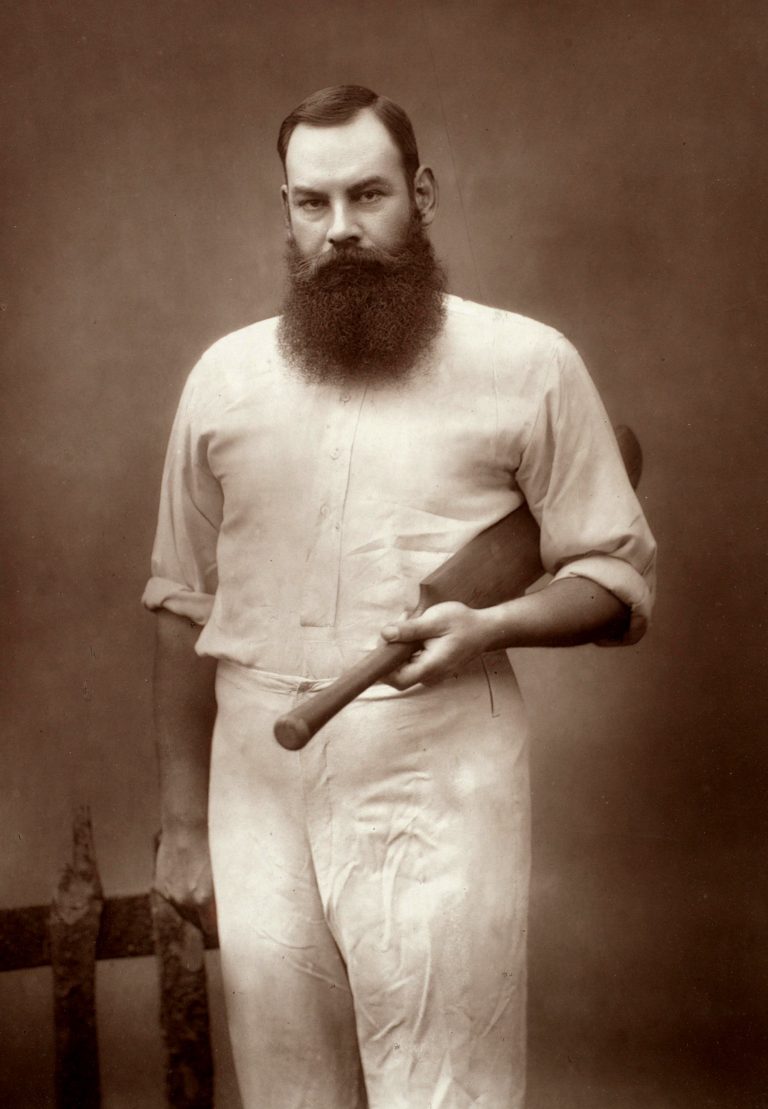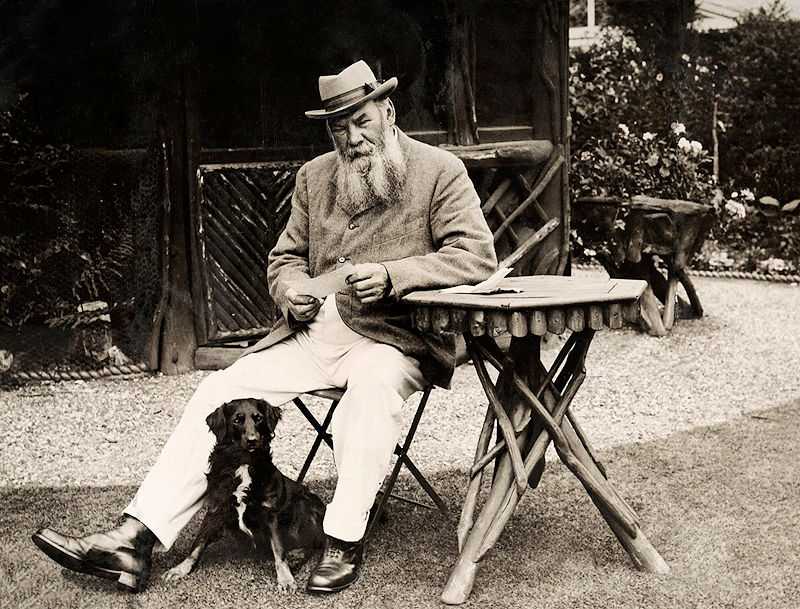When W.G. Grace strode towards the crease clad in long coat and luxuriant beard, Victorian England discovered a cricketing colossus soon spanning decades and realms with domineering displays of batting bravado.
As the sport turned professional cornerstones in its first half-century, Grace became both architect and formidable pillar of game’s rapid development.
Unfurling explosive power, Methodist concentration and advanced technique, Grace dismantled attacks employing on-side drives or punishing pulls accrued in net sessions from childhood.
Bowling too proved equally penetrative, cementing glowing reputation. Such evident gifts for cricket’s core disciplines saw Grace transition seamlessly into leadership roles stewarding further progression as administrator influencing staging and laws.
Article Highlights
Hide- W.G. Grace had a meteoric rise in cricket and revolutionized public perception of the game through his dominant play and unwavering commitment to fitness.
- He was the first player to reach 100 centuries in First-Class cricket and set numerous records throughout his career, showcasing his individual prowess and reflecting the evolution of the game.
- Grace's impact on cricket extended beyond his playing career, as he influenced the codification of cricketing standards and popularized the sport through his exceptional talent and charisma.
- His innovative batting techniques and his role as a hero and inspiration to countless youths fostered a legacy of excellence and shaped cricket's trajectory, leaving an indelible mark on the sport.
Behind the facial hair and statistical ledgers though lies W.G. Grace’s grandest contributions – spearheading momentum carrying cricket into its modern epoch through raw talent and an insatiable hunger driving dominance.
19th century cricket thus gained its first superstar readymade both in image and ruthless run gluttony that evoked awe throughout the land.
Early Years and Upbringing
Born into a family steeped in cricketing tradition on July 18, 1848, William Gilbert Grace, known as W.G. Grace, was destined to leave an indelible mark on the sport from his early years.
His formative experiences were imbued with the principles of cricket, a grounding that would later underpin his monumental contributions to the game.
Grace’s developmental narrative is not merely one of personal triumph but also reflects a broader cultural embrace of cricket as a vehicle for social cohesion and collective identity.
Shane Warne
In the modern cricket era, Shane Warne elevated spin bowling into a spectacle snaring wickets and ... Read More
In a methodical examination of Grace’s upbringing, one discerns the meticulous cultivation of his prowess. His father, Dr. Henry Mills Grace, was an avid cricketer, instilling in young William not only the technical proficiencies but also the strategic acumen that would become synonymous with his name.
The familial enclave provided a fertile ground for Grace to hone his skills, playing for the local team in his hometown of Downend, Gloucestershire.
This period was critical in shaping the trajectory of Grace’s career. It was characterized by rigorous practice and an internalization of cricket’s ethos, which would later manifest in his leadership on the field.
His early exposure to competitive cricket, coupled with a disciplined environment, laid a robust foundation that would enable his ascent to cricketing emancipation and the subsequent liberation of the sport from the clutches of amateurism.
W.G. Grace: Rise to Cricketing Prominence
W.G. Grace’s ascent to cricketing stardom was both meteoric and transformative, signaling a new epoch in which individual prowess could elevate the game to unprecedented levels of public interest and engagement.
His emergence as a cricketing colossus coincided with a period of burgeoning media coverage, which further magnified his exploits and endeared him to a rapidly expanding audience.
Grace’s cricketing narrative is marked by a series of performances that not only notched up statistical milestones but also revolutionized the public’s perception of cricket as a spectator sport.
Grace’s prodigious talent was evident from his teenage years, but it was during the 1860s and 1870s that his dominant play rewrote the annals of cricketing history.
An analytical examination of his formative matches reveals a sporting protagonist whose technique and temperament were uniquely suited to the rigors and demands of the game. His proficiency in both batting and bowling was underpinned by an unwavering commitment to physical fitness, a rarity in an era unaccustomed to athletic rigor.
The scholarly dissection of Grace’s rise elucidates a cricketer whose legacy transcends numbers, as he became the embodiment of cricket’s potential for heroism and transformation. His career catalyzed the liberation of cricket from the clutches of elitism, rendering it a game of the masses.
Notable Career Milestones
Building upon his rise to prominence, Grace’s career was punctuated by a series of milestones that further cemented his status as an unparalleled figure in the sport of cricket.
His achievements, encapsulated within these key moments, not only exemplify his individual prowess but also reflect the evolution of the game during his era. In a nuanced review of Grace’s achievements, the following milestones stand out:
- First-Class Centuries: Grace was the first player to reach 100 centuries in First-Class cricket, a testament to his enduring skill and consistency at the crease.
- Test Cricket Debut: His debut in Test cricket in 1880 marked the beginning of an illustrious international career, setting the stage for future cricketing diplomacy.
- Aggregate Runs Record: In 1895, Grace set the record for the highest number of runs in a single season, amassing an unprecedented 2,346 runs, which underscored his dominance over bowlers.
- Longevity in the Sport: Grace’s cricketing career spanned over four decades, during which he adapted to changing techniques and conditions, illustrating his unparalleled commitment and love for the game.
These milestones, among many others, provide a sequential narrative of Grace’s career, each serving as a waypoint in the journey of a cricketer who was as much an innovator as he was a practitioner of the sport.
W.G. Grace: Statistical Breakdown
Delving into the statistical breakdown of Grace’s career reveals a tapestry of numbers that not only quantify his contributions to cricket but also highlight the extraordinary nature of his sporting achievements.
Grace’s first-class cricket tenure spanned an impressive 44 years, from 1865 to 1908, a duration which in itself is a testament to his enduring prowess and commitment to the sport. Within this period, he amassed 54,211 runs, an astounding feat considering the era’s less batter-friendly conditions.
With a batting average of 32.29, Grace’s consistency at the crease is evident, especially given the primitive equipment and undeveloped pitches of the time.
This average, while modest by modern standards, was formidable in Grace’s day, underscoring his dominance over contemporaries.
His 126 centuries stand as a monolith to his capacity for scoring voluminously, a record that remained untouched for several decades.
Bowling offered another avenue for Grace’s cricketing genius to manifest. He secured 2,809 wickets at an average of 18.14, displaying a remarkable ability to influence the game’s outcome with both bat and ball.
In this dual capacity, Grace embodied the quintessential all-rounder, his statistics painting the portrait of a cricketer whose impact on the game was as quantitative as it was qualitative.
Legacy and Impact on Cricket
The enduring legacy of W.G. Grace is etched into the annals of cricket history, not only through his staggering statistical achievements but also through the profound influence he exerted on the ethos and evolution of the game. His multifaceted impact on cricket can be encapsulated as follows:
- Codification of Cricketing Standards: Grace’s era witnessed the crystallization of cricketing norms and conventions, many of which were directly influenced by his style of play and sportsmanship.
- Popularization of Cricket: His charismatic persona and exceptional talent drew crowds and heightened the game’s appeal, embedding cricket into the cultural consciousness of nations.
- Innovation in Techniques: Grace’s technical proficiency and strategic acumen laid the groundwork for modern batting techniques, offering a template for subsequent generations of cricketers.
- Inspiration for Future Cricketers: His legendary status inspired countless youths to pursue cricket, fostering a legacy of excellence that transcended his era.
These facets collectively underscore Grace’s pivotal role in shaping cricket’s trajectory. His contributions extended beyond the boundary ropes, influencing the game’s spirit and leaving an indelible imprint on its global development. Grace’s paradigmatic significance is reflected not just in the annals of cricket history, but also in the enduring ethos of the sport.
Final Take
W.G. Grace’s career, marked by extraordinary achievements and significant contributions to cricket, established enduring benchmarks for the sport.
Grace’s statistical dominance, underscored by an extensive array of records, redefined cricket’s competitive landscape during the late 19th century.
His proficiency with the bat and ball fostered a transformative impact on cricket, promoting its development into a professional sport.
Grace’s legacy, characterized by innovation and excellence, continues to inspire and shape the ethos of cricket across generations.

















